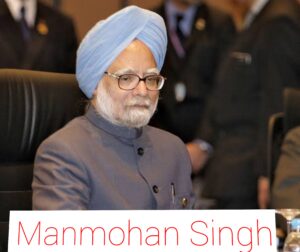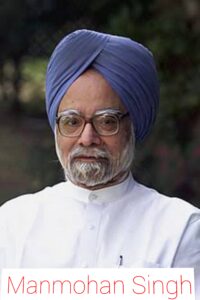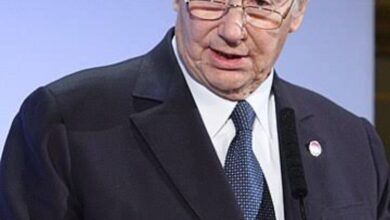Manmohan Singh Biography, Age, Net Worth, Family, Wife, Education, Achievement

Manmohan Singh was an influential Indian politician, economist, and academic who served as the 13th Prime Minister of India from 2004 to 2014. Born on September 26, 1932, in Gah, Punjab (now in Pakistan), Singh’s career was marked by his pivotal role in India’s economic liberalization in the early 1990s as Finance Minister. He was the first Sikh to hold the office of Prime Minister and is remembered for his contributions to India’s economic growth and development.
Manmohan Singh Biography
Manmohan Singh is a distinguished Indian economist, academic, and politician who served as the 13th Prime Minister of India from 2004 to 2014. Born on September 26, 1932, in Gah, a small village in present-day Pakistan, Singh’s early life was shaped by the upheaval of Partition in 1947, which forced his family to migrate to India. Despite these challenges, Singh’s dedication to education and perseverance laid the foundation for his illustrious career.
Singh completed his undergraduate studies in Economics at Panjab University in Chandigarh, earning top honors. He went on to pursue a Master’s degree in Economics from the University of Cambridge in the United Kingdom, where he was deeply influenced by Keynesian economic theories. Later, he earned a doctorate from the University of Oxford, specializing in trade and economic development, establishing himself as a scholar of high repute.
Before entering politics, Singh held several influential positions in academia and governance. He was a professor at the Delhi School of Economics and later served in various administrative capacities, including as the Governor of the Reserve Bank of India. His groundbreaking work as the Finance Minister of India from 1991 to 1996 under Prime Minister P.V. Narasimha Rao marked a turning point for the country. During this period, Singh spearheaded major economic reforms, including liberalization policies that opened India’s economy to global markets, dismantling decades of protectionist practices. These reforms helped revive India’s economy and laid the groundwork for sustained growth.
In 2004, Singh was chosen by Sonia Gandhi, leader of the Indian National Congress, to become the Prime Minister of India. This decision made him the first Sikh to hold the position. As Prime Minister, Singh’s administration focused on inclusive economic development, poverty alleviation, and social welfare programs. Under his leadership, India witnessed significant economic growth, expansion in technology sectors, and initiatives like the Mahatma Gandhi National Rural Employment Guarantee Act, which aimed to address rural unemployment.
However, his tenure was not without controversy. The latter half of his second term was marred by allegations of corruption within his government and criticism of his perceived inability to assert authority over his coalition partners. Despite these challenges, Singh remains respected for his integrity, humility, and dedication to public service.
Manmohan Singh retired from active politics in 2014 but continues to be regarded as a visionary leader who balanced economic progress with social responsibility. His contributions to India’s transformation into a global economic power remain a testament to his legacy.
Also Read :Ahmed Rufai Abubakar Biography, Age, Family, Education, Achievement, Religion, Net Worth
Manmohan Singh Age
Manmohan Singh was born on September 26, 1932. As of today, December 27, 2024, he is 92 years old. Despite his advanced age, Singh continues to be respected for his intellect, humility, and contributions to India’s development. Throughout his life, his focus on education, public service, and economic reforms has solidified his place as one of India’s most influential leaders. Even in retirement, his life story inspires many across generations.
Manmohan Singh Net Worth
Manmohan Singh, India’s 13th Prime Minister, was known for his modest lifestyle and financial transparency. In 2018, when he filed his nomination for the Rajya Sabha, he declared total assets valued at approximately ₹15.77 crore (about $3 million at that time).
His assets included two flats: one in Delhi and another in Chandigarh, collectively valued at ₹7.27 crore. Additionally, he owned a Maruti 800, a popular and economical car model in India, reflecting his simple lifestyle.
Singh’s financial disclosures also revealed bank deposits and investments totaling ₹3.46 crore in his State Bank of India account as of 2013. He held ₹12.76 lakh in the Postal Saving Scheme and possessed jewelry valued at ₹3.86 lakh. Notably, he had no outstanding liabilities or debts, underscoring his prudent financial management.
In the fiscal year 2018-2019, his total income was reported to be around ₹90 lakh. This income likely comprised his pension as a former Prime Minister, along with returns from his investments and savings.
Singh’s financial profile stands out for its simplicity and transparency, especially when compared to many contemporary politicians. His declared assets were modest, and he maintained a debt-free status, reflecting his integrity and commitment to public service.
It’s important to note that these figures are based on disclosures made up to 2018. There may have been changes in his financial status since then, but no significant updates have been publicly documented.
In summary, Manmohan Singh’s net worth, as per available records, was approximately ₹15.77 crore, characterized by modest assets, prudent investments, and a debt-free financial standing.
Also Read :Ahmed Rufai Abubakar Biography, Age, Family, Education, Achievement, Religion, Net Worth
Manmohan Singh Family
Manmohan Singh’s family is an integral part of his life, and he has always maintained a strong bond with them despite his busy political career. He is married to Gursharan Kaur, who has been a steadfast support system for him throughout his journey. Gursharan Kaur, known for her grace and humility, played an active role as the spouse of the Prime Minister, often representing him in cultural and social events during his tenure.
The couple has three daughters: Upinder Singh, Daman Singh, and Amrit Singh. Each of them has pursued distinguished careers in their respective fields.
- Upinder Singh
Upinder is a noted historian and academic. She is a professor at Ashoka University and has authored several books on ancient Indian history, including A History of Ancient and Early Medieval India. Her scholarly contributions have earned her recognition both in India and internationally. - Daman Singh
Daman is a writer and has authored books such as The Last Frontier: People and Forests in Mizoram and a novel, Nine by Nine. Her work often explores social and environmental issues, reflecting her deep engagement with India’s diverse challenges. - Amrit Singh
Amrit is a lawyer based in the United States, specializing in human rights and civil liberties. She is particularly known for her work with the Open Society Justice Initiative, where she has advocated for transparency, accountability, and justice in cases of human rights violations.
Despite their father’s high-profile career, the Singh family has always maintained a low profile, staying out of the public eye as much as possible. This reflects Manmohan Singh’s own humble and reserved nature. His family has been a source of strength and stability, allowing him to focus on his demanding roles in governance and public service.
Manmohan Singh’s family life is a testament to his values of simplicity, education, and dedication, which have been mirrored in the lives of his wife and daughters.
Manmohan Singh Wife

Manmohan Singh’s wife, Gursharan Kaur, is a remarkable woman who has played a significant role in supporting her husband’s illustrious career. Born on September 13, 1937, in a Sikh family in Jalandhar, Punjab, Gursharan Kaur comes from a background that values education, discipline, and humility.
The couple got married in 1958 and have been together for over six decades, sharing a deep bond rooted in mutual respect and understanding. Gursharan Kaur is well-regarded for her simplicity, grace, and warmth, qualities that made her a beloved figure during Manmohan Singh’s tenure as India’s Prime Minister from 2004 to 2014.
While Manmohan Singh is known for his soft-spoken and introverted nature, Gursharan Kaur has been his steadfast companion, balancing his reserved demeanor with her approachable and articulate personality. She often represented him at social and cultural events, providing a personal touch that endeared her to many.
Gursharan Kaur is also a talented singer of Sikh devotional music (shabad kirtan) and has performed at various religious gatherings. Her deep connection to her faith and culture reflects her spiritual side, which complements her public persona.
As a mother, she has been deeply involved in raising their three daughters—Upinder Singh, Daman Singh, and Amrit Singh—all of whom have excelled in their respective fields. Despite being the spouse of one of India’s most powerful leaders, Gursharan Kaur has maintained a low profile, shying away from the limelight and focusing on her family and charitable activities.
During her time as the First Lady of India, she advocated for women’s empowerment and education. Her dignified presence, humility, and ability to connect with people from all walks of life earned her widespread respect. Gursharan Kaur’s role in Manmohan Singh’s life is often cited as a source of strength and stability, helping him navigate the pressures of public life with calmness and composure.
Even after Manmohan Singh retired from active politics, Gursharan Kaur continues to remain a figure of admiration for her simplicity, values, and dedication to her family and community.
Manmohan Singh Education
Manmohan Singh’s education is one of the most remarkable aspects of his life, shaping him into a globally respected economist and leader. His academic journey reflects his dedication, intelligence, and pursuit of excellence despite facing challenges during his early years.
Early Education
Manmohan Singh was born on September 26, 1932, in Gah, a village in present-day Pakistan. After the Partition of India in 1947, his family moved to India. He completed his early education at Hindu College in Amritsar, Punjab. Even as a young student, Singh displayed exceptional academic abilities, excelling in his studies and earning admiration from his teachers and peers.
Undergraduate Studies
Singh pursued a Bachelor’s degree in Economics at Panjab University, Chandigarh. He graduated with honors in 1952, showcasing a keen interest in economic theories and policies. His academic excellence earned him scholarships and opportunities to further his education abroad.
Postgraduate Studies
In 1954, Singh completed his Master’s degree in Economics, also from Panjab University. Determined to delve deeper into the subject, he secured a scholarship to the University of Cambridge in the United Kingdom, one of the world’s most prestigious academic institutions. At Cambridge, Singh earned another degree in Economics in 1957.
While at Cambridge, he was greatly influenced by Keynesian economic theories, which emphasize government intervention to stabilize economies. This exposure played a pivotal role in shaping Singh’s approach to economic policy.
Doctorate and Advanced Studies
Singh’s thirst for knowledge led him to the University of Oxford, where he pursued a Doctor of Philosophy (Ph.D.) in Economics at Nuffield College. His doctoral thesis, titled India’s Export Performance, 1951–1960, Export Prospects and Policy Implications, analyzed India’s trade performance and proposed strategies for growth. Singh completed his Ph.D. in 1962, establishing himself as an expert in international trade and development.
Academic and Professional Achievements
After completing his education, Singh began a distinguished academic career. He served as a professor at institutions like the Delhi School of Economics, where he influenced a generation of students with his insights into economic theory and policy.
Legacy of Education
Manmohan Singh’s academic achievements are a testament to his intellectual brilliance and dedication to economic scholarship. His rigorous education provided him with the expertise to later implement transformative economic reforms as India’s Finance Minister in 1991 and as Prime Minister from 2004 to 2014.
Manmohan Singh Achievement
Manmohan Singh is celebrated for his numerous achievements in academia, governance, and public service. Known for his intellect, humility, and commitment to India’s progress, Singh’s contributions have had a profound impact on the nation. Below are some of his most notable achievements:
- Architect of India’s Economic Liberalization (1991)
As India’s Finance Minister from 1991 to 1996 under Prime Minister P.V. Narasimha Rao, Manmohan Singh spearheaded landmark economic reforms. These reforms marked a departure from decades of socialist policies, opening up the Indian economy to global markets.
Abolished the “License Raj” system that hindered industrial growth.
Introduced policies to attract foreign direct investment (FDI).
Devalued the Indian rupee to boost exports.
Streamlined tax systems and reduced fiscal deficits.
These changes not only saved India from an economic crisis but also laid the foundation for its emergence as a global economic power.
- First Sikh Prime Minister of India (2004–2014)
In 2004, Manmohan Singh became the first Sikh to hold the office of Prime Minister, a historic milestone. His leadership was marked by a focus on inclusive development and economic growth.
- Economic Growth During His Tenure
As Prime Minister, Singh oversaw one of the fastest periods of economic growth in India’s history.
India’s GDP growth rate averaged 8% annually during his first term.
Key sectors like IT, manufacturing, and services expanded significantly.
India became the fourth-largest economy in purchasing power parity (PPP) terms by 2011.
- Social Welfare Initiatives
Singh’s government introduced several transformative social welfare programs aimed at reducing poverty and improving living standards.
Mahatma Gandhi National Rural Employment Guarantee Act (MGNREGA): Provided guaranteed employment to rural households.
Right to Information Act (2005): Enhanced transparency and accountability in governance.
Food Security Bill: Aimed to provide subsidized food grains to millions of people.
- Foreign Policy Milestones
Singh played a critical role in strengthening India’s global standing through diplomacy and international cooperation.
Negotiated the India-U.S. Civil Nuclear Agreement (2008), which ended India’s nuclear isolation and enabled access to civilian nuclear technology.
Strengthened relations with countries like China, Russia, and the European Union.
Championed India’s participation in global summits like the G20 and BRICS.
- Academic and Professional Excellence
Before his political career, Singh was an accomplished economist and academic. He served as:
Governor of the Reserve Bank of India (1982–1985).
Deputy Chairman of the Planning Commission (1985–1987).
Secretary-General of the South Commission, a Geneva-based think tank.
- Recognition and Awards
Awarded the Padma Vibhushan in 1987, India’s second-highest civilian honor, for his contributions to public service.
Received honorary doctorates from prestigious universities worldwide, including Oxford and Cambridge.
Legacy
Manmohan Singh’s legacy is defined by his economic reforms, integrity, and vision for a more inclusive India. Despite facing criticism during his second term as Prime Minister, he is remembered as a transformative leader whose policies significantly shaped modern India.
Manmohan Singh Death
Manmohan Singh, India’s former Prime Minister and a distinguished economist, passed away on December 26, 2024, at the age of 92. He died in New Delhi due to age-related health issues.
Singh was admitted to the All India Institute of Medical Sciences (AIIMS) in New Delhi after experiencing a sudden loss of consciousness at his residence. Despite immediate resuscitative efforts both at home and upon arrival at the hospital, he could not be revived and was declared dead at 9:51 p.m.
Born on September 26, 1932, in Gah, Punjab Province, British India (now in Pakistan), Singh’s life was marked by significant contributions to India’s economic and political landscape. As Finance Minister from 1991 to 1996, he was the architect of economic reforms that liberalized India’s economy, steering the country towards rapid growth. Later, as Prime Minister from 2004 to 2014, he continued to influence India’s trajectory on the global stage.
Singh’s passing elicited heartfelt condolences from leaders worldwide. Prime Minister Narendra Modi acknowledged Singh’s role in shaping modern India, stating, “Dr. Singh’s contributions to our nation will be remembered for generations.” Rahul Gandhi, a prominent figure in the Indian National Congress, remarked, “India has lost a great son; his vision and dedication were instrumental in our nation’s progress.”
Throughout his career, Singh was celebrated for his integrity, humility, and dedication to public service. His economic policies and leadership have left an indelible mark on India’s development. He is survived by his wife, Gursharan Kaur, and their three daughters.



